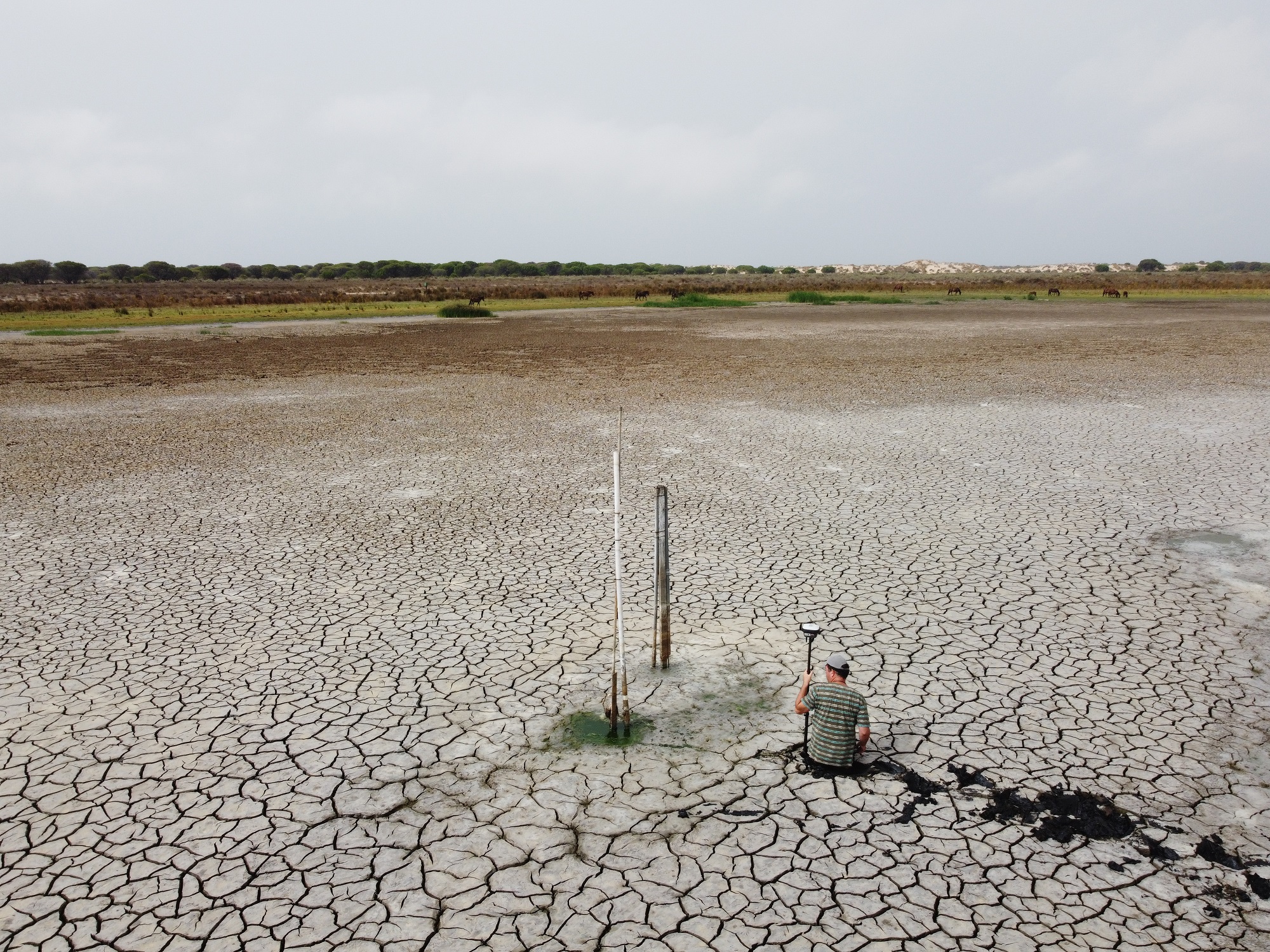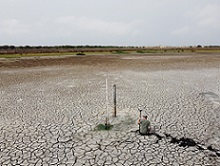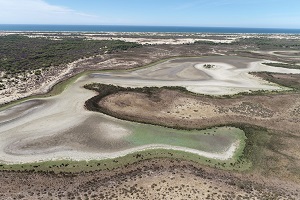- Since the Doñana Biological Station has kept records, the lagoon has never dried up two consecutive summers.
- Severe drought and overexploitation of the aquifer are the causes of the serious situation of the Doñana dune lagoon system
It has happened again. Santa Olalla, the largest permanent lagoon in Doñana, has dried up completely. The Unique Science and Technology Infrastructure - Reserva Biológica de Doñana (ICTS-RBD), dependent on the Estación Biológica de Doñana – CSIC (EBD-CSIC), upgraded a few weeks ago its monitoring camera of the lagoon to follow its evolution closely. Finally, yesterday it was confirmed: the lagoon has completely dried up. Since the research centre began taking data on the natural area half a century ago, this situation has never been recorded for two consecutive years, which testifies to the serious situation of the Doñana lagoon system and, with it, of all the biodiversity that depends on it.
Doñana National Park was declared World Heritage Site in 1994 for its variety of ecosystems and the great diversity of species that inhabit them, making it a unique site in Europe. One of these ecosystems is represented by the dune lagoon system, which is home to an extraordinary biodiversity and refuge for several endangered and endemic species. However, in recent years, the lagoons of Doñana have been undergoing serious deterioration, their flooding period is becoming shorter and shorter and many of them no longer flood at all, which is seriously affecting the biodiversity they support. The drying up of Santa Olalla in summer is one of the most striking examples of the deterioration of the lagoon system, indicating the absence of summer aquatic refuges for the aquatic fauna and flora of Doñana's sandy soils
What the latest scientific data reveal
ICTS – Doñana Biological Reserve, through its Monitoring Programme, has found that the 2021-22 hydrological cycle has been the year with the lowest rainfall levels in the last ten years (283 mm), which has not improved much in the current year, when rainfall has been similar (337 mm up to August). In addition, both years are recording very high maximum temperatures and the highest annual average temperature (18.53°C) on record.
But these factors are not the only ones causing the deterioration of the lagoon system. A study by the Doñana Biological Station published this year, with data collected over 40 years, shows that 59% of the largest lagoons in Doñana have already disappeared. This phenomenon is significantly related to the high temperatures and the long period of low rainfall that Doñana is suffering; b
ut also to the overexploitation of the aquifer that feeds this lagoon system. Eighty percent of these lagoons dried up earlier than would be expected with the temperature and rainfall levels recorded and 84% were flooded less than expected, which confirms that human activity is altering the natural balance of the lagoons and aggravating the problem. Furthermore, it is also worrying that 19% of the remaining lagoons have more than half of their basins invaded by scrub and pine trees and only 10%, mainly those located near the Doñana marshes, remain in good condition. In another recently published study, the Doñana Biological Station concludes that the invasion of the lagoon basins by terrestrial vegetation is a good indicator for detecting their progressive deterioration and imminent disappearance. These symptoms are particularly noticeable in the northwest area of the national park and in the lagoons closest to the seaside resort Matalascañas, including Santa Olalla, where dense reed beds can already be observed in half of its flooding basin and masses of bushes have colonised its current banks and islets
An endangered ecosystem
Most of the lagoons in Doñana are temporary, seasonal, and are flooded thanks to the water from the aquifer which, when recharged by rainfall, reaches the surface level, filling their basins and flooding the area with life. In the last decade no years of heavy rainfall have occurred, reducing the recharge of the aquifer, being insufficient to counteract the excessive abstraction of water for consumption by the tourist town of Matalascañas in the summer period. Additionally, intensive strawberry cultivation, also consuming aquifer water around the park, has increased its surface area by more than 30% in the last 10 years. All this has contributed to reducing the levels of the aquifer, preventing many lagoons from flooding or reducing the flooding period, affecting the life cycles of the species living in these aquatic environments.
Permanent lagoons, which hold water all year round, are very rare in the park, so in this temporary system they act as a refuge for many species. Until a few years ago, only three lagoons were considered permanent: Santa Olalla, Laguna Dulce and Laguna del Sopetón. The only one that could still be considered permanent was Santa Olalla, although it already showed a smaller flooded surface area and high salt concentrations in summer. Its complete drying up prevents, for example, the presence of fish species. When it dried up in 2022, we observed the death of the remaining eels, one of the species that are currently threatened. We are also seeing a decline in the population of freshwater turtles
Recommendations of the scientific community
The Doñana Biological Station is calling for an urgent reduction in the total amount of water extracted from the aquifer to levels that will allow the lagoon system to recover and halt the degradation of the natural area. Updating the system for assessing the state of the aquifer and carrying out annual assessments of water availability in order to define the maximum quantities of extraction permitted and the saving measures to be adopted, are other suggestions made.
Another of its proposals is to urgently re-establish the governance of water management and land use planning in the Doñana region so that they are within the current legality. Of course together with protecting the agricultural sector that operates under the law against the loss of brand value of its products, against unfair competition from illegal producers and against the uncertainty that threatens them in the future. Also important is the establishment of the Doñana 2030 Work Commission, approved by the Doñana Participation Council, to make fast and coordinated progress in resolving all the problems facing Doñana, not only those concerning the aquifer, but also, among others, water pollution and intense overgrazing, which is also affecting the natural enclave and indirectly related with water scarcity



 Santa Olalla, the largest lagoon in Doñana, dries up for the second year in a row
Santa Olalla, the largest lagoon in Doñana, dries up for the second year in a row
